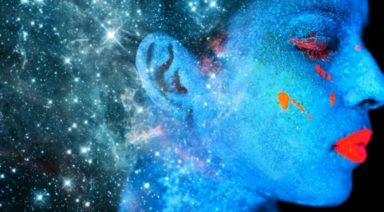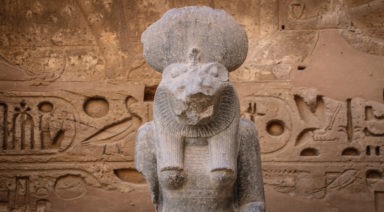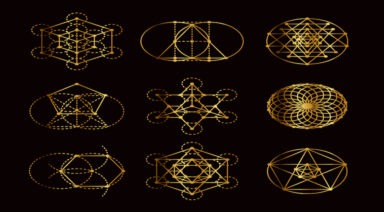5 Ways To Find Faith in Your Daily Life
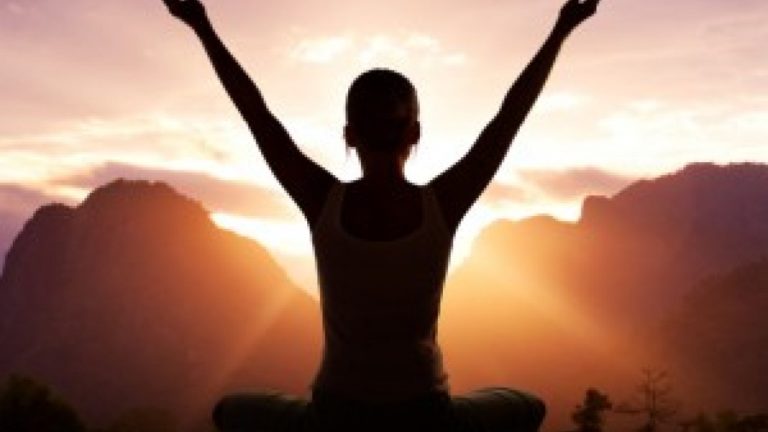
It is light in the darkest night. It brings people to their knees. It is symbolic and powerful, yet proof less and criticized. It illuminates life and it wages war. It escapes some and captivates many. It is faith; to some it is doctrine, to others it is fiction.
Today’s definition of faith doesn’t have to relate to religion; it can be trust or belief in something without proof. But in today’s society the invisible creates disbelief. People lack faith in all areas of their lives because they are looking for evidence. They are waiting for the ideal job, the perfect relationship and financial abundance. They are looking for something tangible—and as a result, they are still waiting. When the answer doesn’t fall into their laps they become cynical and they lose faith.
I was riding in the elevator one morning and a gentleman was repeatedly pressing the button for the 5th floor, but it wasn’t lighting up. I kindly told him that I too had pressed the same button and that the light didn’t work. He laughed and said, “Are you sure we will still arrive?”
I said, “I have faith that the elevator will stop on the 5th floor, yes.”
He looked at me long and hard and responded, “Really? I’m not sure I have that much faith. If it doesn’t seem to work it must be broken.” I said, “If we arrive on 5 will you be a believer then?” He said, “No, it takes more evidence than that.”
What a powerful, symbolic statement. He lacked faith that he would arrive at his destination and for him this destination probably related to life itself. How many of you are so jaded by past experiences that you too have lost all faith and wonder if you are even on the right path?
I can relate to losing inspiration and faith. I spent three years working on a business venture that sucked the life out of my very existence, but I believed that I had to endure hardship to find happiness. I had lost hope that I would ever find passion or joy again. But my inner guidance knew better. I finally had to ask myself: Why is it okay to sacrifice even one day of my life in exchange for potential happiness, when I could be happy right now? I finally took a huge leap of faith and scrapped the entire project. I found strength in my inner wisdom, which knew that I deserved more.
What evidence do you need to rediscover faith in something or in yourself? Are you looking for a lightning bolt? Are you waiting for a lottery win? Have you considered asking for what you want or does it seem like too much to hope for? Have you searched your inner knowing to see what the block is to your own success or happiness? Are you able to recognize what you do have in life?
Today, stop and take pleasure in life’s little miracles. Recognize that each day is a gift, and understand that every breath you take is a test of faith. If you need a little reminder, try these tips on how to find faith in your daily life:
- Have Faith in Lessons Learned
First ask yourself, “Where did my faith go?” What triggered the feeling that you are unsupported? It is a past hurt? Is it a “bad” decision? Is fear playing a role? Sometimes fear tells us we can’t have something and then we lose faith because it doesn’t happen. If you can identify the origin, ask yourself what valuable lesson that experience might have taught you and where you may be repeating that same lesson today.
- Affirm
Affirmations are very powerful. Even if you don’t believe the words initially, your body absorbs the meaning cell by cell. Try, “I have faith in myself and the process of life. I am protected and joyful each and every day.”
- Check Your Pancreas
When the pancreas is imbalanced it carries the emotional energy of feeling defeated by life. Make sure you keep your blood sugar in check by eating every 3-4 hours and eliminating sugar. You may need to see a holistic practitioner to create a special diet or rebalance key minerals.
- Look for Signs
Signs can come in all forms. It can be a song that you are meant to hear or a “coincidence” that repeats itself. Be specific about what kind of sign you need to see for an answer. For example, if you need to know whether to take that new job in Florida, ask for a certain number of signs that relate to Florida that can indicate a yes.
- Dream big, expect the best and let go
The more you can imagine for yourself the bigger your life can be. The key is to believe that you are the designer of your destiny. Write out your ideal life like you already have it and then let go, trust and enjoy the ride.
The Rainbow Body Seeker
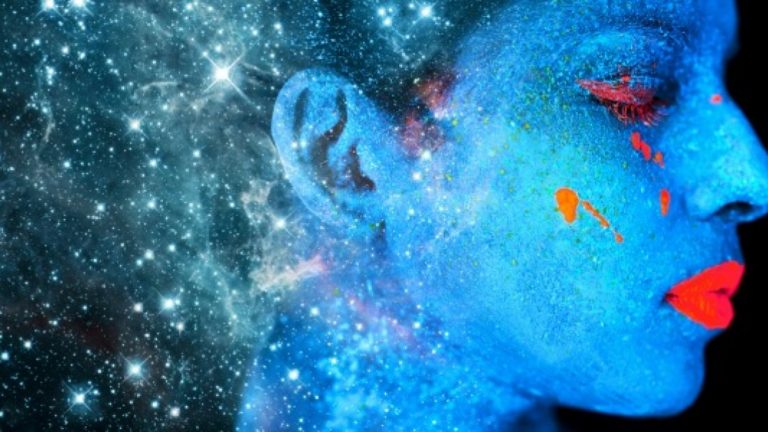
In the summer of 1987 just out of high school, while waiting tables at a restaurant, I met a woman who introduced me to books published by The Saint Germain Foundation, an esoteric religious organization. The Saint Germain Foundation, also known as the “I AM” Foundation, which some pundits claim to be a cult, was started in the 1930s by a man named Guy Ballard who walked with and received channeled information from angelic beings and professed to be the reincarnation of George Washington.
I was fascinated by Ballard’s writings and accounts of “Ascended Masters” whom I had never heard of, outside of Jesus, and their teachings. These masters have incarnated on our planet over the millennia, including Jesus and the foundation’s inspiration, a French alchemist named Saint Germain, and were ultimately able to raise the vibration of their bodies through meditation and other means to an “Ascended Master” state, conquering the mandate of our fallen state: “birth and rebirth” or karma.
I learned that these beings in cooperation with galactic organizations and higher dimensional beings have assisted and continue to assist our planet and inhabitants evolve to a greater spiritual awareness.
This was news to me! The organization also offered books of decrees that purportedly help an individual raise his or her spiritual awareness through repetitive decrees and affirmations. I tried the decrees for a while on my own and attended their services at a Saint Germain Foundation location in Houston for a short time.
I never progressed very deeply into their group, and quickly became disenchanted with the prospects of furthering my commitment with the organization, when I found a blank form in a drawer on the premises that signed away one’s possessions and estate to the organization upon one’s death. Just another church I thought! And even though I never became a card-carrying member of The Saint Germain Foundation, I was so influenced by their teachings and their affirmations, that I even had a tattoo inked on my upper back of an old illustration of “The ‘I AM’ Presence” from their books which depicts a person’s higher self, resembling an angel with a rainbow emanating from it and hovering over a person’s earthly body.
Over the years I have carried this possibility of physical ascension around with me even though I had no family or friends that shared this view. It certainly seems unattainable to most everyone I have talked to, with the prevailing view that death and leaving your mortal remains behind is not up for negotiation. Generally, whatever one believes comes after death is certainly up for discussion, but not “the final nail.”
I did encounter some hope for understanding this process through Drunvalo Melchizedek’s Flower of Life books which investigate and reveal much about the hidden history of ancient civilizations including Atlantis and Lemuria, and the Merkaba — An ascension vehicle that took Old Testament figures like Enoch and Elijah, and possibly Jesus into the higher dimensions. The Star of David is a two-dimensional representation of this sacred Merkaba star-tetrahedron geometry, according to Melchizedek and others. After being inspired by those teachings I even got a Star of David tattoo on my left forearm.
I had not previously been familiar with the documented evidence of thousands of highly attuned monks in the Tibetan Dzogchen tradition who have been witnessed in modern times, shrinking their bodies at death and attaining a rainbow body. Amazing! I was already familiar with the avatar Babaji from Paramhansa Yogananda’s seminal “Autobiography of a Yogi” who is essentially an ascended being that instructed the “param-guru” or “guru’s guru” of Yogananda, a householder named Lahiri Mahasaya who later became a yogi. Yogananda even wrote about his own personal contact with this divine being Babaji in his book.
Later I read a report that Yogananada’s body had stayed in an incorruptible state weeks after he had died, and that he showed no signs of decay. There is no record of which I am aware that he raised his body and left no mortal remains behind, as his body was embalmed and eventually buried. After attending some services years ago in Los Angeles at a Yogananda “Self-Realization Fellowship” church (directly adjacent to a Scientology compound in East Hollywood, no less), and taking some written correspondence courses from Yogananda’s organization, I did not feel like I was getting any closer to my understanding of physical ascension awareness or process. And by that time in my early thirties, I had long fallen out of step with the Christian church and could not seem to find a group of like-minded seekers.
Maybe it is inherently a greater challenge to find spiritual truth, living in our western world of fast-paced commerce and disposable commodities. Especially it seems so here in the US. Perhaps this type of frenetic, media-driven culture, and the decline of traditional religion, is also what is driving the growth of a new consciousness industry of which Gaia and other similar companies are an integral part.
From my experience having lived in Berlin, Germany before and after 9/11 and spending time in Europe, there is an appreciation of the past and generally a more leisurely daily pace, but I can’t say people are any more spiritual across the pond. I have yet to visit India or Asia to gain more first-hand understanding of Eastern spiritual traditions and their currency in that part of the globe, but look forward to at some point — hopefully soon.
So here we are now in the Internet age, and for all of us living in countries that are fortunate to have relatively unrestricted access, we can share and discover a wealth of knowledge about all things spiritual. And it is certainly my deepest hope, that maybe for some greater concentration of people in the near future, there will be a quantum shift, possibly with the aid of external, even “other-worldly” technology or galactic influence, or possibly on a more subtle level, where we shift toward a seemingly utopian “post-Fall” evolutionary dimension.
I feel the urge now more than ever to find answers to my quest, since my wife and I are in the process of raising children. I know it’s hard for humanity to envision a world where we are not limited by dense, physical bodies. Most people seem satisfied to return back to such a place after passing through the mystery of death!
I try to imagine what would daily life be like here if we were somehow able to undertake some sort of mass ascension?
What could the inhabitants of such a world create and manifest? Sometimes It feels so close, and sometimes so far away. Is it really just a matter of loving everyone unconditionally, all the time? Let’s see if we can make it a reality.


